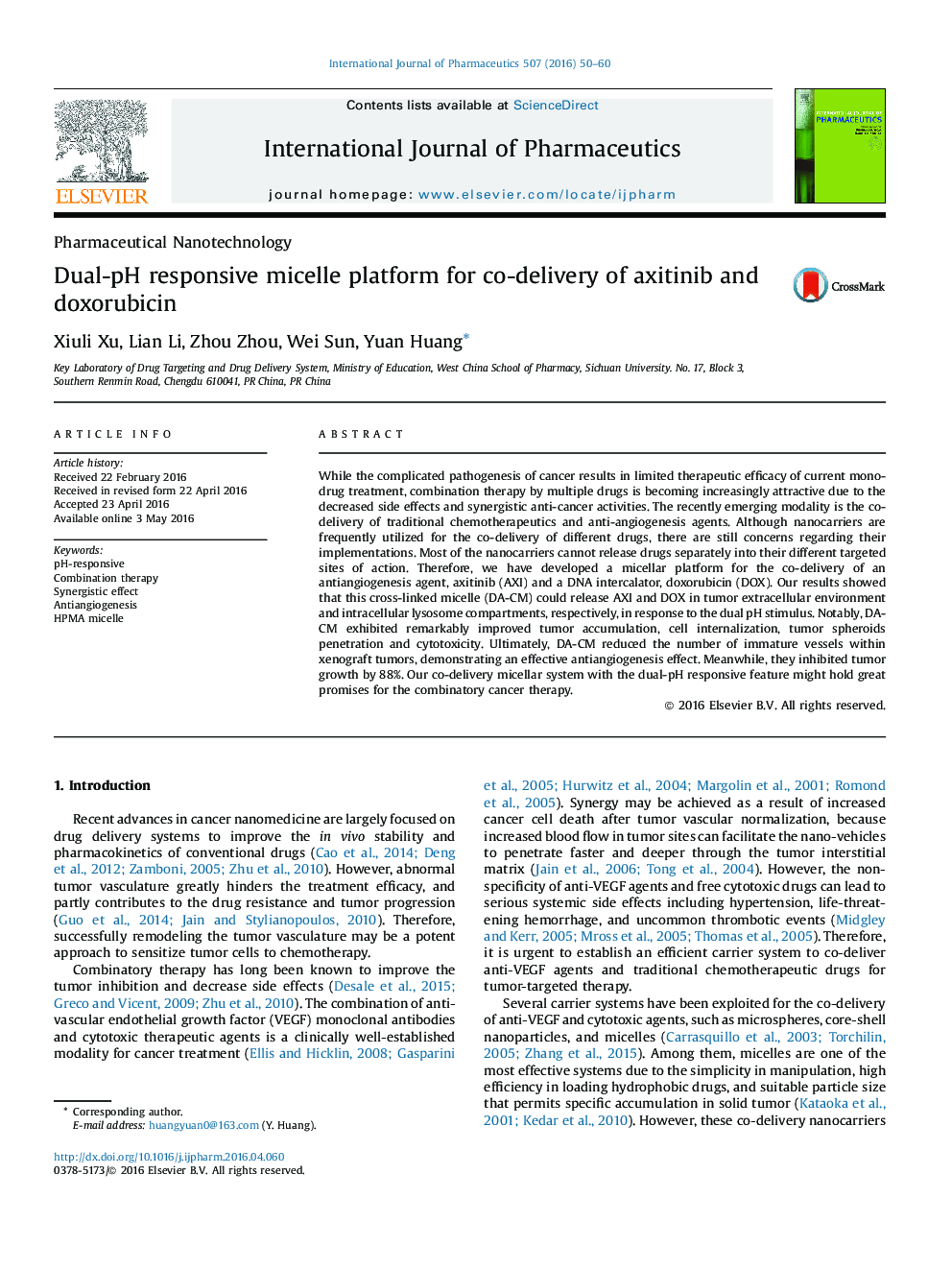| Article ID | Journal | Published Year | Pages | File Type |
|---|---|---|---|---|
| 2500924 | International Journal of Pharmaceutics | 2016 | 11 Pages |
While the complicated pathogenesis of cancer results in limited therapeutic efficacy of current mono-drug treatment, combination therapy by multiple drugs is becoming increasingly attractive due to the decreased side effects and synergistic anti-cancer activities. The recently emerging modality is the co-delivery of traditional chemotherapeutics and anti-angiogenesis agents. Although nanocarriers are frequently utilized for the co-delivery of different drugs, there are still concerns regarding their implementations. Most of the nanocarriers cannot release drugs separately into their different targeted sites of action. Therefore, we have developed a micellar platform for the co-delivery of an antiangiogenesis agent, axitinib (AXI) and a DNA intercalator, doxorubicin (DOX). Our results showed that this cross-linked micelle (DA-CM) could release AXI and DOX in tumor extracellular environment and intracellular lysosome compartments, respectively, in response to the dual pH stimulus. Notably, DA-CM exhibited remarkably improved tumor accumulation, cell internalization, tumor spheroids penetration and cytotoxicity. Ultimately, DA-CM reduced the number of immature vessels within xenograft tumors, demonstrating an effective antiangiogenesis effect. Meanwhile, they inhibited tumor growth by 88%. Our co-delivery micellar system with the dual-pH responsive feature might hold great promises for the combinatory cancer therapy.
Graphical abstractFigure optionsDownload full-size imageDownload high-quality image (126 K)Download as PowerPoint slideIllustration of dual-pH responsive micellar platform for co-delivery of axitinib (AXI) and doxorubicin (DOX) based on HPMA coplymers.
